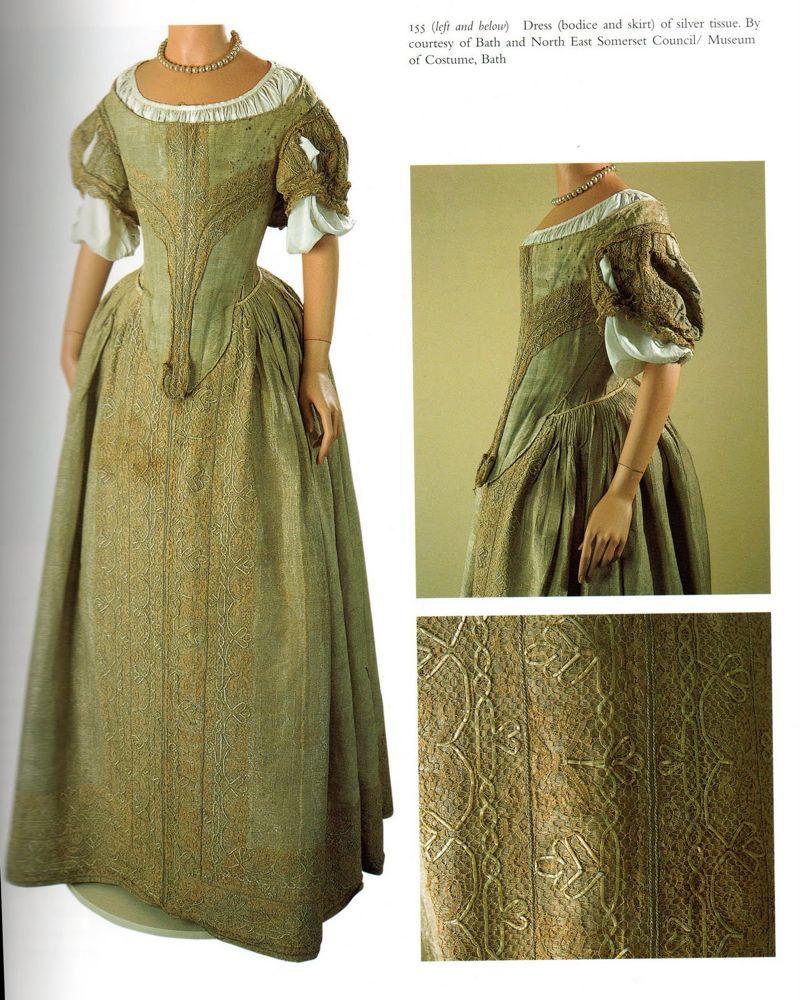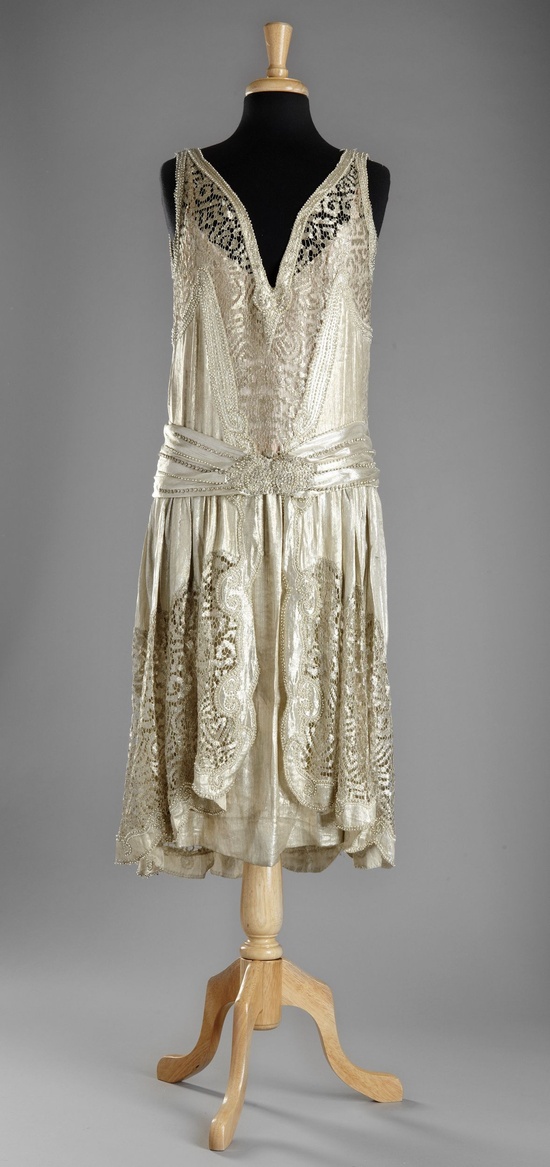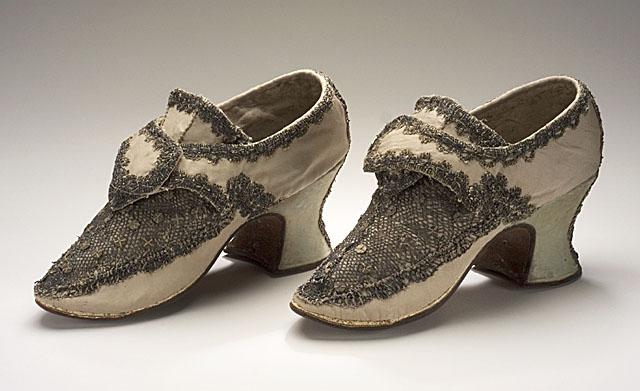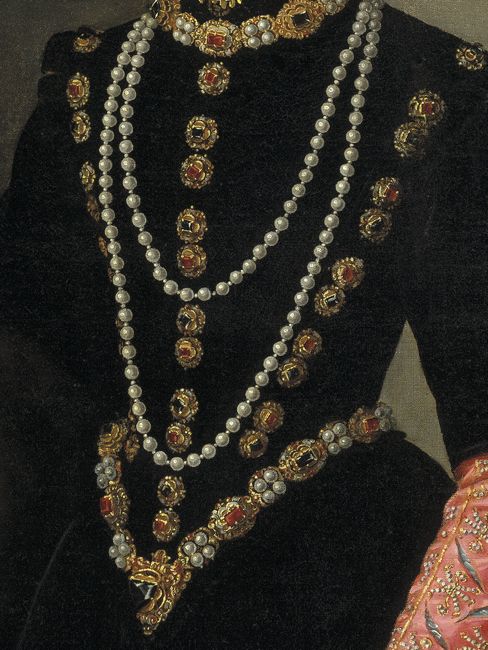And this is it! The last challenge for the HSF 2014. The theme for Challenge #24, due Thur 1 Jan, is All that Glitters: Celebrate your completion of HSF ’14, and the New Year, with a glittery, glitzy, sparkly, shiny, something.
Sparkle and shine have been desirable attributes of textiles almost since there were textiles. Sparkle was associated with precious metals and stones, conveying wealth and status on dress. Silk has been the most valuable fibre for centuries, in huge part because of its lustre and shine. While sparkle and shine are sometimes seen in daywear today, they are still hugely associated with evening wear and special events: clothes for memorable occasions.
Finishing the HSF is pretty memorable, so let’s make some glittery, glitzy, sparkly, shiny items to celebrate!
You could use satin, long prized for its sheen and lustre (interestingly, this week’s Rate the Dress has copped some criticism for the sheen of the silk satin)

Dress of white aerophane crape and satin, over a rich white satin slip, Royal Ladies Magazine, June 1831, via Koshka the Cat

Dress, Paris, France, 1869-1870, Vignon, Ribbed silk trimmed with satin, faced with cotton, brass, Victoria & Albert Museum, T.118 to D-1979

Evening gown, ca. 1880, silk, gold thread, lace, silk braid and silk flowers, Museo de Historia Mexicana
Or sequins, which have a much older pedigree than many people realised. Sequins made by covering wooden disks in gold foil have been found in Bronze Age graves. Shiny metal disks have been used to decorate clothing in dozens of era’s and cultures since then. They have provided sparkle on 18th century men’s waistcoats:

Man’s Three-piece Suit (detail of suit worn with coral vest) Italy, probably Venice, circa 1785-1790, LACMA
And early 20th century evening dresses, where the shine of metal has been replaced by lighter, sparklier, more fragile celluloid:

Evening Dress, 1909, Callot Soeurs, Paris, Silk mesh embellished with celluloid sequins and paste gems, Gregg Museum of Art & Design, 2003.014.208
If satin is to subtle, and sequins too shiny, there is always the decadence of cloth of gold or silver:

Gown of Italian gold brocade with a pomegranate design in gold on a reddish-violet silk ground. First half of the 15th century.

Mantua, English from French fabric, 1755-1760 from fabric woven between 1753-1755, Silk, silver-gilt thread, linen thread, silk thread, hand-sewn, V&A
And more modern cloths of gold and silver, like lame
Elaborately patterned shine could be added by couching and metal embroidery:

Lady Arabella Stuart by Marcus Gheeraerts the Younger, Norton Simon Museum, Pasadena, Ca, ca. 1605-10

Wedding suit, English, 1673, Wool, embroidered with silver and silver-gilt thread & lined with red silk, V&A

Muslin evening dress 1812-1815. Embroidered with single strands of very fine silk, the stalks are embroidered in silver gilt thread
Metal lace is a personal favourite of mine provides a similar effect, though with less effort:
And there are other types of metal work, like assuit:
Plus, you could bead or bejewel your garment:
And, even if your garment itself wasn’t shiny, you could always add sparkle with jewellery!

Headdress with leaf-shaped ornaments, 2600—2500 b.c.; Early Dynastic period IIIa; Sumerian style Excavated at “King’s Grave,” Ur, Mesopotamia Gold, lapis lazuli, carnelian

















I’m on target to make my Roman necklace for Challenge #24. I have the beads, the wire, a clasp, jump rings to use as necessary (to minimize the amount of cutting and bending I need to do), and a brand-new pair of round-nose pliers to help with the bending (which should be useful for other projects as well).
It’s late enough that I probably could start this, but I could also do it over one of the holiday weekends, since it should be quick enough to complete. (Unless I’ve gotten too few beads or something, but the style–with the wire loops being a significant part of the necklace–should make it possible to make the necklace with a modest number of beads).
I’m really looking forward to seeing all the shiny–and having a complete Roman parure to inspire me for next year!
Wonderful post with so much beautiful inspiration! Thank you! Amazing that we will soon be finished with 2014. It’s been an incredible journey! Will there be a HSF 2015?
I’ve only completed a few challenges this year, but I’m really looking forward to this one. I have so many ideas and I can’t wait to see what everyone else does!
Oooh, some of this stuff makes me want to loot a museum! The huge purple dress, the gold Mainbocher, the Monteil, the jewellery…
Although Elisabeth of Austria appears to have an infestation of cochineal bugs, which is less appealing!
This will be soooooo shiny! (Firefly pun FTW!)
Lady Arabella Stuart’s spiderweb skirt has to be one of my all-time favourite historical garments. If I had the time, I’d probably make one. As it is, I’m going for something slightly less ambitious but just as ostentatious: a flinderhaube.
It’s one of my favourites too, and I’m also pondering possibilities for makeing one!
Oh, that would be awesome!
http://isabelladangelo.blogspot.com/2014/12/historical-sew-fortnightly-14-24-all.html
Just a pair of very heavily embroidered sleeves with silver thread. 🙂
It is done, my glittery entry for #24.
http://sewingfromanothertime.wordpress.com/
Thank you so much Dreamstress for hosting this year’s challenges. I really feel that my historical sewing techniques have improved because of these challenges. I learned so much by having time constraints, I had to make decisions and revise plans to meet the deadlines. Most of them, I did not meet on time, but I tried to finish before the next challenge was due. I was able to complete 20 challenges out of the 24 posted. I am extremely proud of all of the completed projects. Again, thank you.